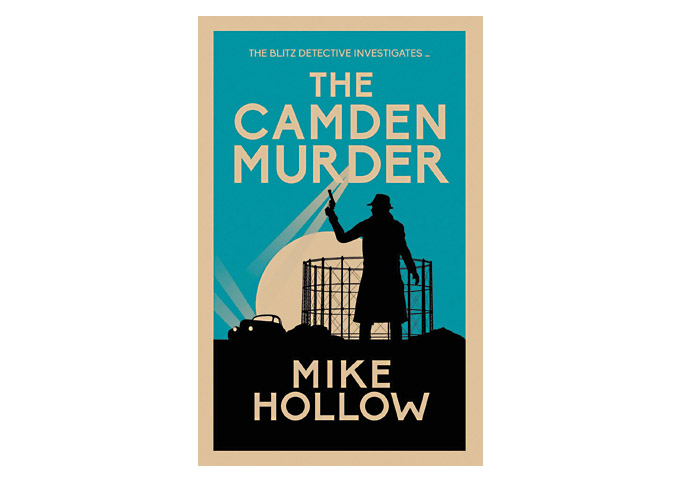Case history
In his latest wartime crime thriller, Mike Hollow’s Blitz Detective has a mystery to solve near the Regent’s Canal. Peter Gruner investigates
Thursday, 29th June 2023 — By Peter Gruner

Mike Hollow [Mark Wilson]
THOUSANDS were killed in Camden by German bombs dropped on the UK more than 80 years ago in the Second World War, but life had to carry on.
And so it does in a new detective thriller, The Camden Murder by Mike Hollow, which takes us back to the 1940s when people in the borough would seek shelter in the open on Hampstead Heath or down below at Hampstead tube station.
East London author Hollow, 70, chose Camden for his latest war-time novel for its “fame and popularity” and was inspired by his parents who lived through those dreadful times.
“My dad Ken was a member of the Home Guard at just 17,” he says. “He was called up a few years later and helped fight the Nazis. Mum remembered the skies of London being red with fires.”
With at least three million homes demolished in London alone during the war there are also obvious resonances with today’s so-called “special military operation” by Russia against Ukraine.
The book’s hero is quietly fastidious Detective Inspector John Jago, based at Kentish Town police station. He’s joined by his ever-courteous and respectful young colleague, Detective Constable Peter Cradock, who is a far cry from the often loud and rumbustious popular portrayal of today’s young cops. Together they are investigating the death of a First World War veteran and chocolate salesman burnt to death in a car in Baynes Street near the Regent’s Canal.
Hollow describes how a convergence of canal, roads and railway made the then “drab and dreary” area around Camden Town a transport hub, and a major target for German raids. Incidentally, property in those bleak days would have been very cheap but today a one-bed flat in the area can cost up to half a million.
In this case the dead man, married commercial traveller Les Latham, doesn’t appear to have been struck by an enemy bomb. In fact the theory seems to be that he was first murdered and then his car was set alight. He obviously didn’t live up to his nickname, “Lucky Les”.

For DC Cradock the early scene of a man charred beyond recognition was too much and he struggled not to be sick. But DI Jago had seen it all before. Back in 1917 during the First World War he remembered men on fire, struggling to escape the wreck of their tank at Cambrai.
We learn that Les had met up recently with an old friend and ex-army pal Jimmy Trent at the Oxford Arms pub, which was built in early Victorian times and of course is still going strong today.
DI Jago even buys Jimmy a pint before asking him about Les. We learn that Les was born in Camden and Jimmy lived and worked on canal boats. Not only did Les risk his life in the trenches during the “war to end all wars,” he ended up having to live at Rowton House hostel for the homeless, which in 1905 became Arlington House and is still providing support.
DI Jago and DC Cradock take a walk along the canal path towards Hawley Lock and notice the contrast between the “banks lined with smoke grimed warehouses,” and the “narrow boats painted in delightful patterns of blue, red, green and yellow, and looking scrupulously clean”.
The detailed police investigation builds tension and finally arrives at a surprise denouement and two arrests.
This is the seventh in the Blitz Detective series set in London in the 1940s and featuring Detective Inspector Jago. The eighth, set in Covent Garden, is due out in October.
The Historical Novel Society described the book as an “excellent police procedural, authentic and detailed in historical context”.
• The Camden Murder. By Mike Hollow. Alison & Busby, £8.99